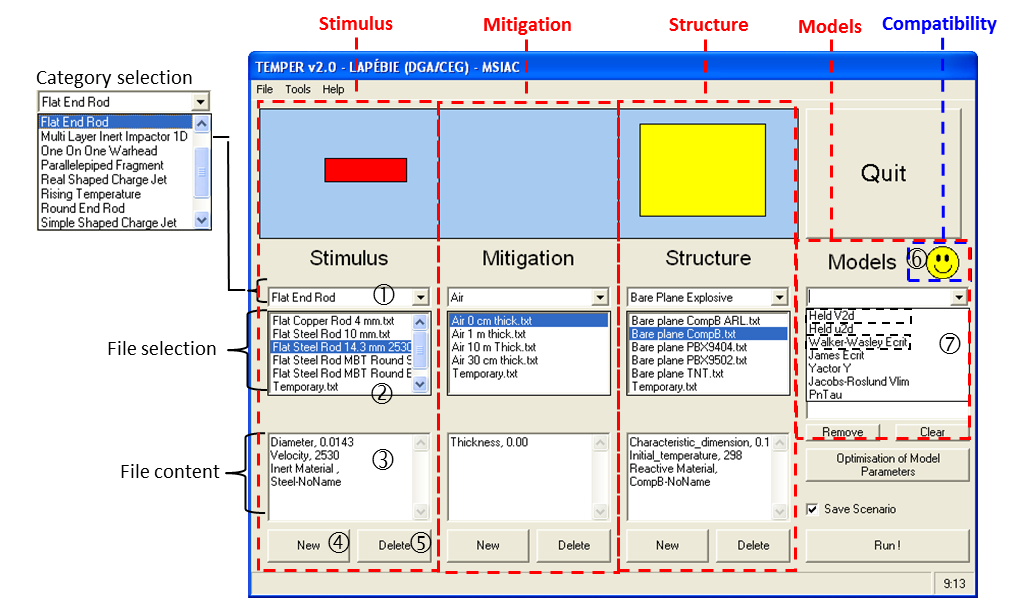Hold your TEMPER
The latest version of Toolbox of Engineering Models to Predict Explosive Reactions, TEMPER v2.3 has been successfully compiled and uploaded to the MSIAC secure website and is ready for use. It is essentially identical to TEMPER v2.2.1, except that it will now run on recent versions of Windows and is compatible with recent versions of Excel. It may be accessed by filling out the online request form (https://www.msiac.nato.int/contact-access/access-request-form-for-members-of-msiac-nations) for WebLink access and receiving subsequent approval by the associated National Focal Point Officer (NFPO). After downloading through the WebLink (MSIAC > MSIAC Member Nations > MSIAC Software Tools > TEMPER - Toolbox of Engineering Models for the Prediction of Explosives Reaction), TEMPER v2.3 may be unzipped, installed and run locally on modern Windows based computers that include a modern version of Excel. An installation program is included that requires local administrative computer rights.
TEMPER is a library of models developed by the Gramat Research Centre (Centre d’études de Gramat, or CEG) and the NATO Munitions Safety Information Analysis Centre (MSIAC). MSIAC is responsible for making TEMPER available via it’s secure website, some product support and development, and user group management.
TEMPER is a unique and powerful software package that utilizes a library of empirical or semi-empirical models dedicated to insensitive munitions (IM) assessment. It is an “open source”, Object-Oriented Programming project programmed in Microsoft Visual Basic 6.0 (VB6). It was developed with the intention of allowing full flexibility to add custom models or to enhance existing ones. Munitions, insensitive munitions (IM) and energetics subject matter experts (SME) can use it as an aid to predict the response of a munition or laboratory experiment to a mechanical or a thermal threat. The intent was to allow SMEs the possibility to implement their own models with limited programming skills. The easiest way to do this was to use an object-oriented programming language, much more modular than classical ones (such as Fortran). VB6 was chosen for its many easy programming advantages and especially because it is an easy-access, widely used environment with a friendly Graphical User Interface (GUI).
Unfortunately, the final release of VB6 was in 1998. On April 8, 2008 Microsoft stopped supporting VB6. The last supported version was TEMPER v2.2.1. which runs on Windows XP, but does not run under more modern versions of Windows. As a result, TEMPER was recently ported through VB6 to run under Windows 2012R2, Windows 7, Windows 10 and to be compatible with Excel 2010, 2013, 2016. The resulting version has been named TEMPER v2.3 and contains all of the capability and shortcomings (bugs) of the previous version.
No further development of updating of TEMPER is planned. A new MSIAC tool application, Analytical Response Models (ARM) is being developed to eventually replace TEMPER. The initial modeling capability provided in ARM is for the prediction of detonation by impact threats. MSIAC Report L-254, Analytical Response Models (ARM) Application Specification provides details of the ARM modeling capability and development plans.
TEMPER Main Window


